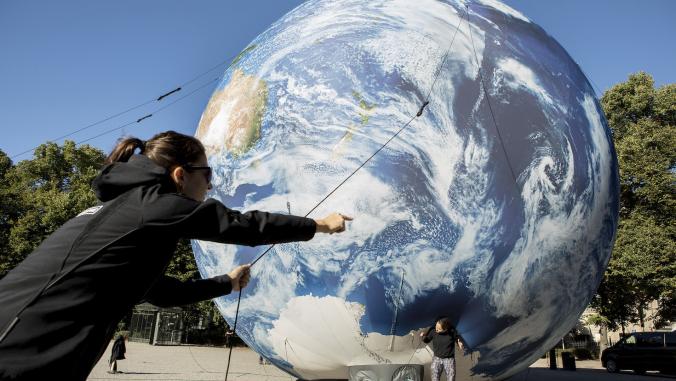A cresting wave for circular water strategy
More and more, it's a matter of social equity.

Each year Stockholm World Water Week is focused on a specific theme. This year, the topic is Water and Waste: Reduce and Reuse, which addresses the critical need to move from a linear model of water management to a circular one.
A circular economy strategy is one in which there is a feedback loop of integrating "waste" back into the system as a "resource." When applying this concept to water, examples include the reuse of wastewater for manufacturing opportunities and treating contaminated water and replenishing aquifers.
The need to move from a linear strategy to a circular one is driven to a significant extent by the gap between water supply and demand as well as associated issues of security, economic development and stewardship. According to the World Bank, some regions could see their growth rates decline by as much as 6 percent of gross domestic product (GDP) by 2050 as a result of water-related impacts in agriculture, health, income and property — sending them into sustained negative growth.
Relatively recently has water been integrated into the narrative of the benefits of a circular economy strategy — this approach is championed by the Ellen A. MacArthur Foundation and organizations such as the U.S. Chamber of Commerce Foundation. Several management consulting and engineering firms such as McKinsey and Arup also have articulated the value of approaching water management with circular economy principles in mind.
In the United States, a circular economy water strategy is also framed as a "One Water" approach — outlined by the U.S. Water Alliance in its 2017 One Water Roadmap (PDF). The benefits of a circular economy/One Water strategy are highlighted in Figure 1 (below) and are applicable to private and public organizations on a local and global scale, implemented through innovative partnerships that create cascading benefits.

Note that the One Water roadmap creates social benefits (in the form of water equity) in addition to environmental and economic benefits. Using water more effectively lifts the burden of ineffective water management from the poor and creates economic opportunities. Water equity is clearly not just an issue in emerging economies. It is also challenge in the United States, under the radar for the most part unless there is headline news such as Flint, Michigan.
The U.S. Water Alliance’s recent briefing paper frames the issue of water and inequity. The authors note: "Vulnerable communities face an array of water-related challenges: affordability, lack of infrastructure, water quality issues, and the impacts of a changing climate. The impacts of water stress on public health and economic mobility are compounded by underlying challenges such as poverty and unemployment."
Embracing a circular water strategy such as the one highlighted in the One Water roadmap has the potential to create significant value for society. This approach also supports several Sustainable Development Goals (SDGs) that center on improving water use efficiency, recycling and reuse by the 2030 timeframe.
For example, one target associated with SDG 6 aims at improving water quality by reducing pollution, eliminating dumping and minimizing release of hazardous chemicals and materials, halving the proportion of untreated wastewater and substantially increasing recycling and safe reuse globally. Another aims for the increase of water-use efficiency across all sectors.
Next week's Stockholm Water Week conference will kick off with a seminar dedicated to exploring the circular water more deeply (the session is convened by the Stockholm International Water Institute along with CAF-Development Bank of Latin America, the Rockefeller Foundation and the World Resources Institute). The case is compelling: Within the new 21st century strategy for water, the linear strategy is no longer viable. I will report after the proceedings with key takeaways for diverse stakeholders from the private sector, public sector, NGOs, academics and civil society.





